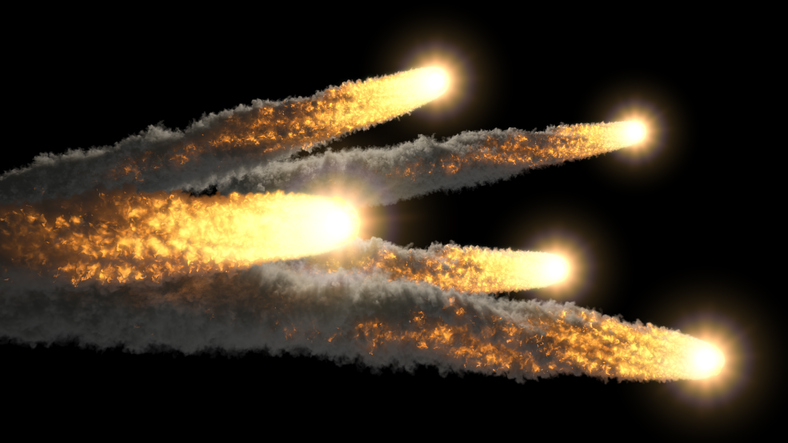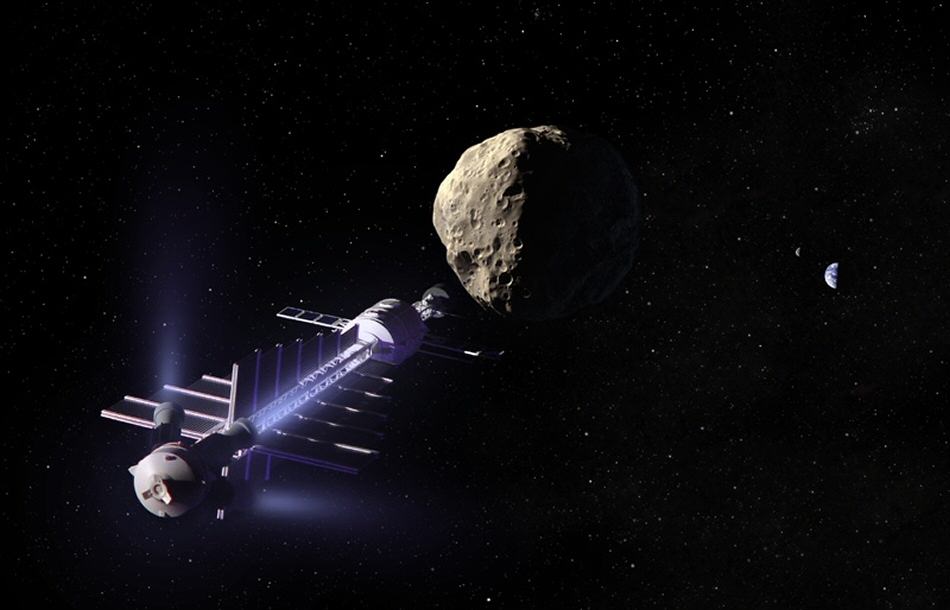5 Planetary Defense Systems That Could Keep Us Safe From Asteroids
Scientists are still developing methods and testing to come up with the most effective solutions.
Don’t worry. The event of a civilization-ending asteroid impact is a very unlikely one. To be precise, there’s a 0.000001 percent chance any year that this will happen. You can breathe a sigh of relief.
How about the so-called city-killers? While the probability is still small at 0.1 percent, it’s worth paying attention to. That’s what many space experts think, including NASA chief Jim Bridenstine, who recently said we need to get serious about asteroid threats.
Here are 5 ways that the planet can be defended from an asteroid in the unlikely event an enormous one is found to be on a collision course with Earth.
RELATED: 4 TIMES HUGE ASTEROIDS CAME FRIGHTENINGLY CLOSE TO EARTH
Are we prepared for a large asteroid impact?
Right now the truth is we might not be. Technologies for deflecting asteroid are still very much in the testing phase — NASA’s first real-world test is expected to take place next year.
Even our ability to detect asteroids needs improvement. Only last year one asteroid, called ‘2019 OK’ went undetected until just 24 hours before a very close flyby.
When that occurred, MIT planetary scientist Richard Binzel told BuzzFeed News that “it’s no surprise an object like that would take us by surprise. Our current asteroid search capabilities are not up to the level they should be.”

While we have the ability to detect and know an asteroid’s trajectory for years in advance, NASA scientists have warned that we would be unprepared in the very unlikely event that a large meteor catches us by surprise.
Here are a few of the methods that are being developed to protect Earth from those space rocks.
1. Nuclear impactors
Last year, NASA researchers threw a bit of shade in the direction of Bruce Willis and the team behind Armageddon by saying there’s a right way and a wrong way to blow up an asteroid — and Hollywood films categorically have shown us the wrong way.
“If you’ve seen those movies, they’re completely bogus,” Lindley Johnson, the planetary defense officer at NASA headquarters, said during a media session on protecting Earth from asteroids. “That’s not how we would use a nuclear explosive device to do this at all.”

There’s a reason for that. The real approach would be less of a spectacle on the silver screen. Scientists wouldn’t aim to blow an asteroid to pieces as this would likely be counterintuitive. It could create lots of smaller but still dangerous meteors.
Instead, a nuclear impact would be set off near the asteroid to slow its speed down by a fraction. Over the course of months or years, the change in speed would alter the space rock’s trajectory enough to miss Earth.
2. HAIV
NASA’s upcoming Double Asteroid Redirection Test (DART) test will be an example of the Hypervelocity Asteroid Intercept Vehicle (HAIV) approach. In this approach, rather than using a nuclear impactor a vehicle is used to slow down an asteroid and, ultimately, alter its trajectory.
The DART mission will use technology so accurate that it won’t just hone in on an asteroid, called Didymos, using a smart autonomous navigation system, it will actually hit the 160-meter diameter “moonlet” orbiting the asteroid.
Incredibly, the DART spacecraft will travel at a speed of about 6.6 km/s (4 mi/s), or 23,760 km/h (14,760 mph) in its approach to Didymos.
If successful, the mission will showcase the incredible precision and reliability of space technology, where being off by a fraction can send you to a location millions of miles away.
3. Laser beams
Long acronyms and asteroid defense systems seem to go hand in hand and the Directed Energy System for Targeting of Asteroids and Exploration (DE-STAR) is no different. The project, led by Professor Philip Lubin of the UCSB Experimental Cosmology Group (ECG), is aimed at creating laser technology that is able to deflect an asteroid into a safe trajectory if it is on a collision course with Earth.
The ECG wants to develop two types of lasers, a larger one that would be placed in Earth’s orbit and take out asteroids on a close flyby, and a much smaller one that would be sent via a spacecraft to its target.

A highly focused laser beam would be capable of raising a section of an asteroid’s surface to ~3000 K (2725 °C; 4940 °F), the EGC says. In effect, part of the asteroid would be vaporized meaning that its weight would be changed and its trajectory, in theory, would be altered.
4. Laser bees
Yes, you read that right. Laser bees use the same concept as the laser beam approach, except the beams are shot from several tiny robotic bees.
The Planetary Society — which recently successfully tested a solar sail — has been collaborating with a team at the University of Strathclyde and the University of Glasgow on this idea.

The project originally revolved around shooting concentrated light at asteroids using mirrors. When the team realized lasers were more effective, they switched their focus.
The benefit of this over sending one spacecraft with a mounted laser beam on it is that, if one of the bees malfunctions, there are still many others there to accomplish the mission’s objective of vaporizing that asteroid out of harm’s way.
The Planetary Society says this would also be the second quickest and most effective way of averting an asteroid after a nuclear warhead. Unlike a nuclear impactor though, the laser bees method doesn’t come with the risk of breaking the asteroid up into smaller, but still dangerous meteors.
5. Gravitational tractor
Have you heard of the tractor beam concept that is prevalent in sci-fi? In movies such as Star Wars and Star Trek, one spacecraft will typically fly near another one and shoot out a beam that lets it control the other craft’s movement.
The gravitational tractor concept isn’t quite as easy to execute, but it would still require an incredible feat of engineering to accomplish.

Essentially, a spacecraft would fly up to an asteroid in the same way as in the HAIV method. However, instead of crashing into it, the spacecraft would fly alongside the space rock. Out in the zero-gravity of space, both objects would be attracted to each other by their gravitational pulls.
Rather than letting the asteroid and spacecraft collide, the manmade object would use thrusters to keep itself at just enough of a distance away from the space rock to pull it out of its current trajectory.
The concept was published in a study titled ‘A Gravitational Tractor for Towing Asteroids’ by Edward T. Lu and Stanley G. Love.

Source: aryos/iStock
Thankfully, we are very unlikely to need to use these kinds of technologies in the near future. Of course, that doesn’t mean that it isn’t necessary to develop and test methods for deflecting asteroids on a collision course with Earth.
It’s better to be overly precautious in the present and well prepared for the future. The dinosaurs didn’t have the means to avert their own demise, but we do.
 SHOW COMMENT ()
SHOW COMMENT ()










